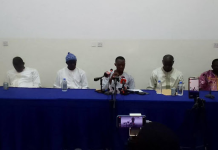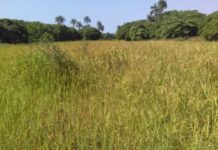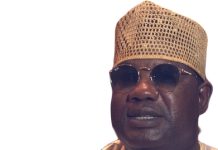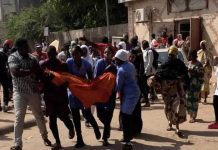In commemorating White Cane Day the Gambia Orgaisation for the Visually Impaired (GOVI) issued a press release emphasising  the need for the public to recognise that both the sighted and the visual impaired share public places and effort should be made to facilitate their movement in public places. The statement calls for concerted action in the design and construction of shared places and for consultation with blindness organisations.
the need for the public to recognise that both the sighted and the visual impaired share public places and effort should be made to facilitate their movement in public places. The statement calls for concerted action in the design and construction of shared places and for consultation with blindness organisations.
Below is the full text of press release:
October 15th of every year is observed all over the world as white cane day. This day is set aside by the United Nations to sensitize motorists, pedestrians and road users of their moral responsibility to assist the blind move freely and safely from place to place.
The white cane is the global symbol of independence and mobility, for blind and partially sighted persons and every October 15th we celebrate its importance for white cane safety Day. The ability to move freely on one’s own has been an integral cause of the blindness movement since its inception, and it continues to be one of the most important global causes for blind and partially sighted people today. Challenges to the mobility of blind people are ever-changing because the communities that blind and partially sighted persons live in are constantly being updated. Everyone’s safe transit must always be considered as environments are being updated.
An example of an emerging challenge is the issue of safe transit through shared spaces. A shared space is identified as ‘a street or place designed to improve pedestrian movement and comfort by reducing the dominance of motor vehicles and enabling all users to share the space rather than follow the clearly defined rules implied by more conventional designs’. However, this increased complexity can make mobility more difficult for persons who are blind or partially sighted.
“Travelling safely in shared spaces depends a great deal on eye contact between vehicle drivers, cyclists and pedestrians, a kind of informal indication, of who will be in the shared space next,” said Martine Abel- Williamson. As a blind person, I cannot adhere to that spontaneous, informal kind of communication; she added.
The issues of shared spaces are presenting problems for blind and partially sighted people everywhere, in places all over the world. Travelling independently across the multiple transportation routes can be very frightening without adequate tactile and audio cues and it should not be assumed by city planners that everyone can travel through these spaces by simply making eye contact with others.
As explained, the white cane can help improve this situation as ‘people and drivers look out for the visually impaired as the white cane makes it clear in a positive and internationally acknowledged way to others around the blind but still confidently travelling.
However, we cannot solely rely on people to respect and acknowledge white canes or even guide dogs. The mobility needs of all persons with disabilities, including blind and partially sighted persons, must be taken into account from the very first stages of design and creation of shared spaces. Overall, the statement emphasises the need for consultation with blindness organisations throughout all stages of the process and if this consultation is missing, we then encourage blindness organisations to advocate against the installation of a shared space.




















